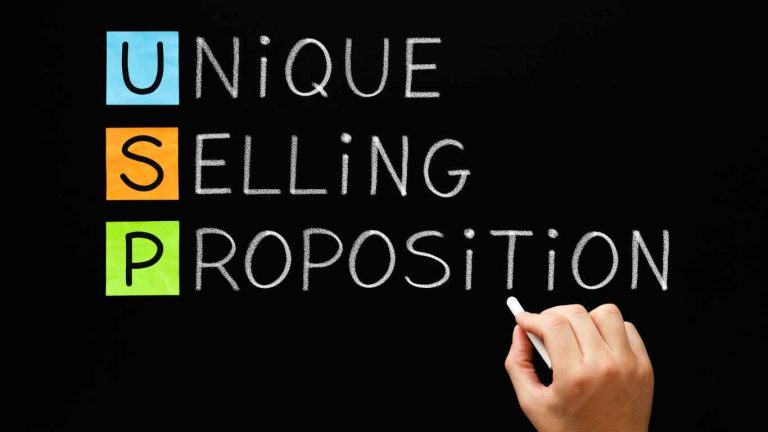Measures to stay ahead of my competition
In this article, I will explore ways that you can use to stay ahead of your competition. We will touch on some timeless techniques, and I’ll also be asking a couple of significant questions, to help you get clarity from your clients/customers perspective on who or what your competition really is (we’ll come onto that in a moment).
I will also explore times when being focused on your competition is neither helpful nor productive!
As a business owner or senior manager that takes responsibility for or contributes to strategy, market positioning, marketing including pricing and sales you will of at some point looked at the competitive landscape and perhaps key competitors in some detail. There will of course be different levels; from at one extreme – looking at the competition many years ago when you first set up and were working out how much to charge, to having in place dashboards that monitor competitor activity so you can adapt your tactics in response to market conditions. The levels you go to will in my experience be influenced by two key things a) Your market and b) Your attitude towards the competition and the importance you attribute to it.
The real question
So, what’s the real question here? – it’s not how often I should monitor my competition, but how can I gain competitive advantage, and what kinds of competitive advantage should I go for?
Purpose
I’ve three aims for this article. As usual take what is useful and turn it into practical actions for you and your business and ignore what is not!
- To make you think about what market you are really in and what that means for you.
- To give you a practical checklist you can use within your own business to support you gaining competitive advantage.
- To highlight when not to obsess about the competition and focus on delivering your own great experience.

What market are you in?
Before we dive into the competitive advantage checklist, I would like you consider who or what are you really competing against?
Is this not obvious, some of you are asking – we are a flower shop (insert what you do here), don’t we complete with other flower shops (insert what you do here)? The answer is yes and. What do I mean? Let me use the simple flower shop example to explain. On a product level you do indeed complete with other places that sell flowers this could be an independent flower shop, supermarket, garage (some might argue that one!) or on-line flower supplier. Where the customers need has be predefined by a product, in this case flowers, then this type of competition is the most relevant. What if the customers need was not pre-defined by a specific product solution. Take for example the need is a housewarming gift to be sent to a friend. One answer to this gift could indeed be flowers, yet there will be a host of other possibilities – a bottle of champagne, boxes of chocolates, a just East voucher, etc, you get the idea.
The example I love to share on this is Netflix. Whilst the obvious competitors might be Disney or Amazon or any other streaming service, I believe they site sleep as one of the things they compete against! This comes from fact that through data they understand usage habits and realise that people binge watch, until at some point they must make that call: one more episode or bed!
Given they operate in the entertainment space, they will also compete with other forms of entertainment and recreation.
Now is a great time to ask yourself what market or markets are you really in?
Once you know what it will be far easier to define your key competitors (which might differ depending on the offering). And with your key competitors clear, you can begin the process of positioning and differentiating your offer.
Quite a while back I headed up Marketing for the Linda McCartney brand. When I took over the brand was in steep decline and catering for a niche within a niche of the vegetarian market, which was about 5% of the population at the time. Rather than focus just within this niche, one of the major drivers of the turnaround was thinking about which market we were targeting. We went for a far larger flexitarian market (a common term now, but lesser known back then) – those eating more meat free food, not just because of animal cruelty (the traditional vegetarian domain) but for health of peoples and th planet! This one strategic choice alone was a very powerful one. I hope this inspires you to think differently about the market you operate in and how you might bring a fresh perspective to it.
Join the NoLimits Business Community
Are you a business owner looking to take your business to the next level? Join our innovative community of like-minded professionals and gain access to a wealth of valuable resources, including a community portal to chat with other business owners, ebooks, business development software, and growth events that will transform the way you do business. Best of all, these resources are completely free and will be available to you forever.
Gaining competitive advantage checklist:

1. Know your competition:
Understand who your competitors are, what their strengths and weaknesses are, and how they are positioning themselves in the market. I encourage you, to go a step further and analyse their products/services and customer experience. You can do this directly yourself via some form of mystery shop or research those who have experienced your competitors.
2. Know your target customers (target market):
Understand who your customers and clients are, what they want, like and desire. Where your product/service touches their lives and the difference it makes. The more you operate in a commodity market (which I define as price being the main differentiator), the more you’ll need to seek other ways to differentiate your product that are relevant/exciting to your target market. Look at any food commodity item and you’ll see examples of such differentiation. For example, Rice you’ll see types, colours, formats, brands all designed to tap into different needs and desires. A microwavable sachet of brown with spice for those seeking a combination of convenience, healthier and flavour. There are two key times to really get to get under the skin of your customers. The first is at the conception of your product/service to really understand their needs. The second is on-going and leads up to point 3.
3. Seek Feedback and continuously improve:
Proactively ask for feedback and observe customers reactions to your product/experience. Listen and understand in-order that you only change what needs to be changed. Innovation should respond to a consumer need (sometimes one that is not overly expressed – think of Henry Ford when he was researching the car, people asked him for a faster horse!). Somethings don’t need to change, so do exercise caution if your competitors are doing something you think the market does not need or value.

4. Focus on your unique value proposition:
What is it that makes your product special, unique, or different in the eyes of the consumer? Or what combination elements make up your unique recipe for success? To identify your unique value proposition (sometimes known as a Unique sales proposition) you’ll have needed to complete steps 1-3 above. In fact, if you don’t know what your UVP is for a product or service that already performers well for you go directly to step 3 and ask people. What is it about our product/service that makes you come to us as opposed to going elsewhere.

5. Market positioning (Linked heavily with UVP):
Market positioning is defining how a company’s products or services stand out in the marketplace and how they are perceived by customers relative to others. There are several types of competitive advantage positioning that companies commonly leverage:
Price advantage:
This is when a business/brand offers products or services at a lower price than its competitors. This can be achieved through cost efficiencies, economies of scale, or by offering a basic or no-frills version of a product or service. However, companies need to ensure that they can maintain profitability and sustainable growth while offering a lower price. Being the lowest price often requires unique scale or technological innovation, so proceed with caution here if you are a SME! As you know value and price are two completely different things. One vulnerability of large business you can choose to exploit here is that this strategy often means they can’t do things you can as margins don’t allow.
Service advantage:
This is when a business/brand offers superior customer service, support, or after-sales service compared to its competitors. This can create customer loyalty and positive word-of-mouth, as well as differentiation in a crowded marketplace. Now if you ask most business owners why they are different or better many say service. For it to be a truly compelling point of different you need to know what about the service makes it’s so good and why this is important to the customers (just saying as this comes up frequently)Innovation/product advantage:
This is when a business/brand offers unique, innovative, and high-quality products or services that are not available elsewhere in the market. This can come from technology breakthroughs, process improvements, or strategic partnerships that enable companies to offer something new and valuable to customers.Brand image advantage:
This refers to the overall perception of a brand in the marketplace, including its reputation, personality, and values. A strong brand can help to create customer loyalty, generate positive associations, and drive sales through emotional connections with customers. Ever paid more for a simple item of clothing because it had a certain label? Ralph Lauren making the polo shirt famous is a great example of this. PR and social media can be very powerful tools if you get it right these days and enable business to quickly build image through association that in previous generations may have taken decades of advertising.
Which of these resonates with you for your business? By asking yourself which positioning your key competitors occupy, can help you confirm your unique position.
6. Communication of your UVP:
As this is a check list, I just wanted to make it obvious that it’s no use just having a UVP you’ll need to communicate in a relevant and compelling way with your target audience, so it resonates. Develop a strong marketing strategy that focuses on your unique value proposition and effectively reaches your target audience. A quick tip – before you dismiss your UVP as irrelevant make sure that it is being communicated in the right way. Try communicating the same thing is different ways and test and measure the results.

7. Invest in Team:
Some say that the best source of competitive advantage is your people. Whilst I like the sentiment this conveys, I don’t totally agree with it in every situation. That said, I am a huge advocate the investing in team, learning and development. Your management team and employees are indeed one of your most valuable assets – invest in them and they can run the business for you and continue to drive sustainable profitable growth even when you are not there.
8. Keep up to date with Industry and consumer trends:
Myopia has killed some big business – those that did not see or ignored the signs to move with the times. Blockbuster rejected working with Netflix! Kodak were one of the first manufacturers of the digital camera! So, keep up with the latest industry trends, technologies, and consumer preferences. This will help you stay relevant and adapt quickly to changes in the market.

9. Grow and develop your business:
Grow or die I believe the saying goes. As markets evolve and consumer lifestyles change, new opportunities will emerge. Some may threaten the very existence of your current operating model (hence point 8 being so important) others will present opportunities for growth. Potential for your business and brand to stretch into new products/services, geographies and or consumer groups.
Conclusion
Ultimately, a true competitive advantage is something that enables a business to achieve superior performance and profitability over the long term. It is a combination of factors that work together to create a unique and valuable position in the market, and it requires ongoing investment, innovation, and adaptation to maintain.
Utopia would be to have no comparable competition; no one that can match your unique combination or recipe – aim for this and I’m sure you’ll stay ahead. Do nothing and think you are untouchable then you’ll certainly come a cropper in the long term!
When not to obsess about the competition?
Remember it’s your business, with your strategy to drive success as you define it.
You are in charge. From a positive mind-set perspective, you are your only competition!
So, if you are inclined to, don’t make comparisons to others that are not helping you. Keep your competitive intelligence factual and the decisions you make on it objective.
Focus on what you need to do to achieve your success.
Action
What action are you going to take because of reading this?
If you’ve any comments, questions, or feedback – please do reach out to the Author of this article James Gentle
By James Gentle
Join the NoLimits Business Community
Are you a business owner looking to take your business to the next level? Join our innovative community of like-minded professionals and gain access to a wealth of valuable resources, including a community portal to chat with other business owners, ebooks, business development software, and growth events that will transform the way you do business. Best of all, these resources are completely free and will be available to you forever.
But the benefits of joining our NoLimits business community don’t stop there. By becoming part of our community, you’ll have the opportunity to connect with other business owners, share insights and ideas, and build valuable relationships that will help your business thrive. Don’t miss out on this amazing opportunity to supercharge your business and join us today!

